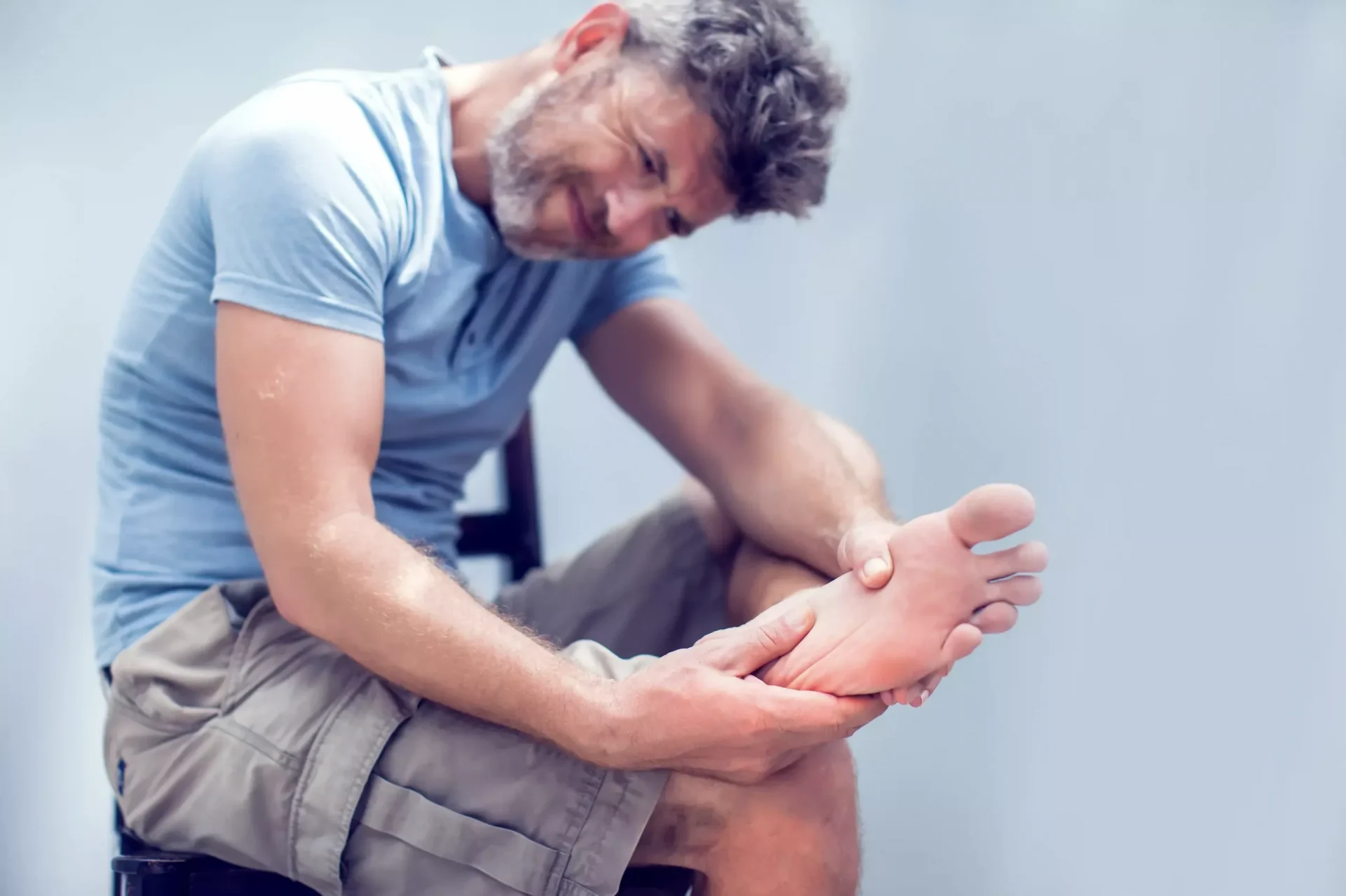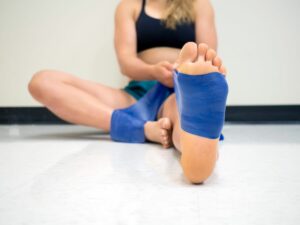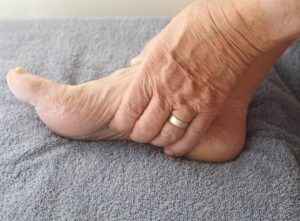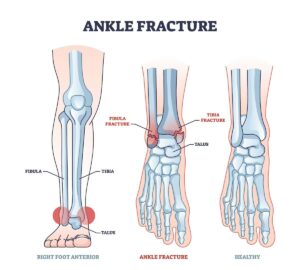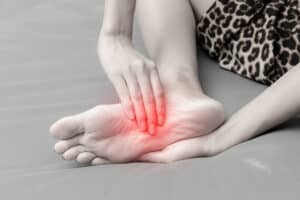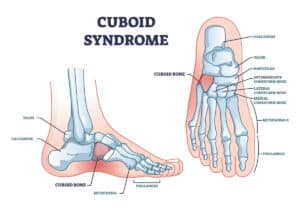Free download: Top 10 Natural & Easy Remedies for Joint Pain from Home. Learn these helpful remedies.
Estimated Reading Time: 7 minutes read
Any pain can be frustrating, but there’s something extra annoying about plantar fasciitis. One of the main reasons is that you’re reminded of your pain every time you take a step – so basically all the time.
Another frustration is that plantar fasciitis can limit your ability to walk, run, jog, and be active in general.
That really throws off your exercise routine and limits your progress with fitness goals! We’ll discuss plantar fasciitis treatment at home to literally help you get back on your feet.
Table of Contents
What is Plantar Fasciitis?
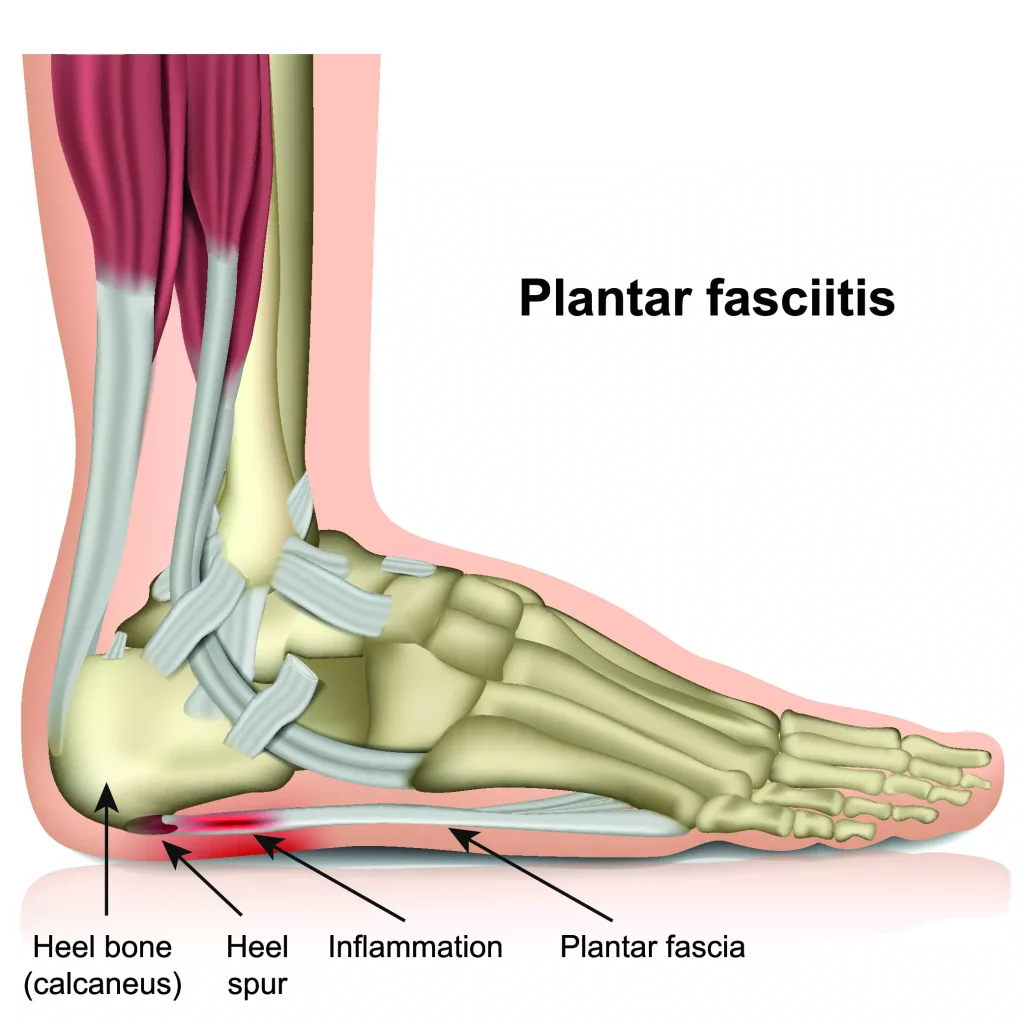
Plantar fasciitis occurs when the connective tissue on the bottom of your foot – called plantar fascia – becomes tight and irritated.
Plantar fascia runs from your heel to the ball of your foot so you could feel plantar fasciitis pain anywhere from your heel to the arch of your foot.
Side note: make sure to check if pain is coming from any cuts on your foot, especially if you have any neuropathy symptoms.
It can be easy to get a cut and not notice until there’s increased pain.
A cut should be checked to see if it’s healing and you should reach out to our Primary Care Physician if the cut doesn’t heel or looks infected. If pain is coming from a cut, it may not be plantar fasciitis.
What Does is Plantar Fasciitis Feel Like?
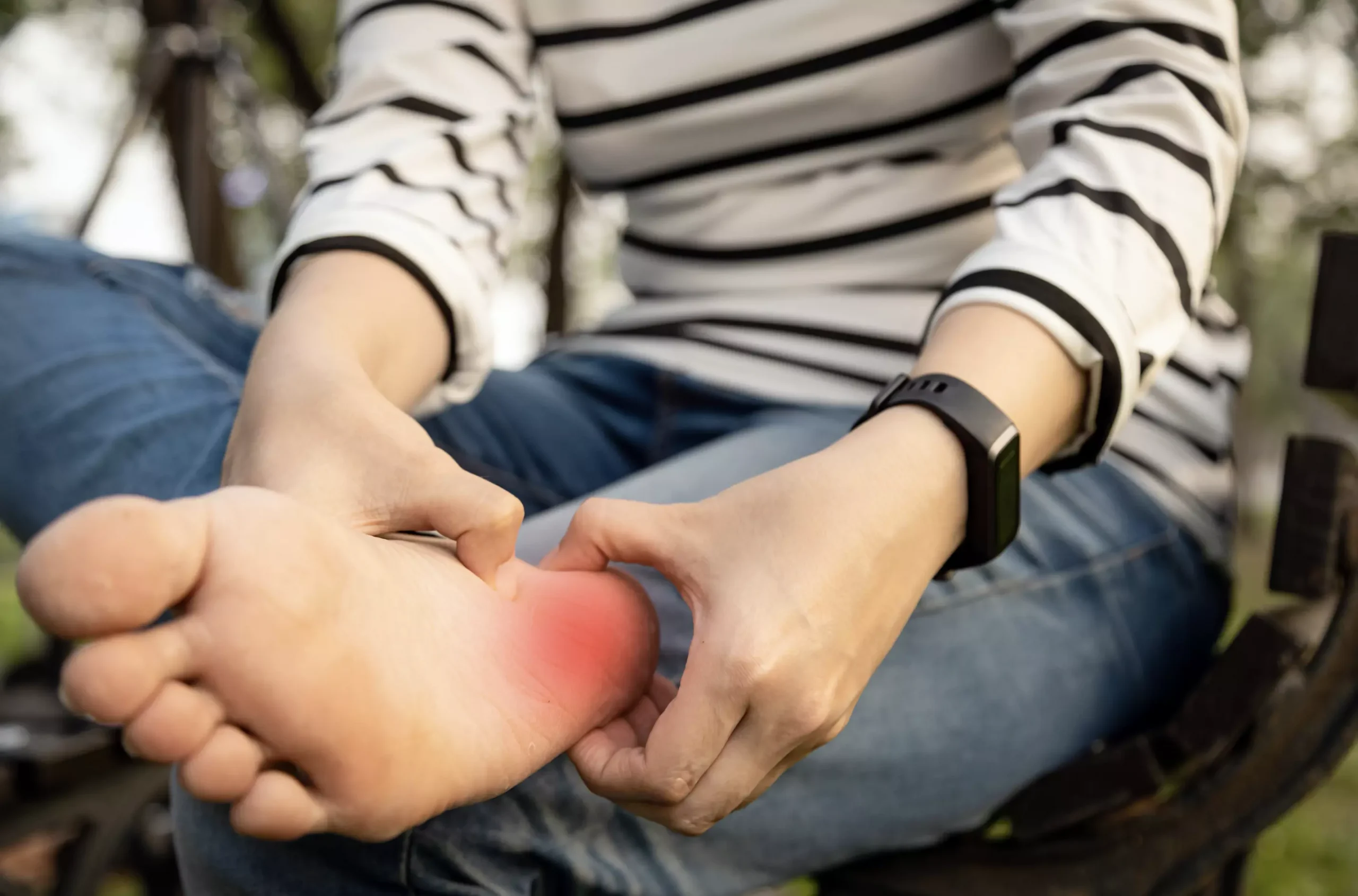
At its worst, you may feel constant pain in your heel or along the arch of your foot every time you take a step.
In less serious cases you may also feel plantar fasciitis pain on and off at different times of the day.
Sometimes the pain is worst in the morning right after getting up, or pain may increase with activity like standing or walking.
In general, while the times of pain may vary, you’ll feel pain consistently on the bottom of your foot.
What Causes Plantar Fasciitis?
Plantar fasciitis can happen for many reasons: muscle tightness, foot weakness, inactivity, or repetitive movements.
You may also experience plantar fasciitis if you increase your activity level, especially if that activity is running or jogging.
What are Some Home Remedies for Plantar Fasciitis?
Plantar fasciitis is curable and there are some good general stretches and exercises to help with pain.
Best Plantar Fasciitis Stretch
One of the the best stretch that helps to heal plantar fasciitis quickly is Calf Stretch.
Your calf muscles attach at the bottom of your heel and can pull on the plantar fascia. This means tight calf muscles are a common cause of plantar fasciitis pain.

- Start by standing on a bottom step with both feet and holding onto a railing for balance.
- Keep your right foot fully on the step while bringing your left foot halfway off the step.
- Drop your left heel down and shift your weight to your left side till you feel a pull in the back of your calf.
- Hold for 30 seconds, then switch sides.
Plantar Fasciitis Massage
Use a firm surface to massage tight plantar fascia: remember pain comes from the plantar fascia being tight so one way to relieve pain is to loosen up the tight tissue!
- Take a golf ball, tennis ball, lacrosse ball, or frozen water bottle and place it under your foot. The firmer the surface – like a golf ball – the easier it will be to massage the bottom of your foot.
- Roll your foot over the firm surface feeling for tight spots.
If you feel a tight spot hold on that point for 10-30 seconds. Then keep rolling around for another minute. - Repeat as needed, most likely every day and even up to three times a day if your pain is significant. As pain improves you can reduce the number or times you roll out the bottom of your foot.
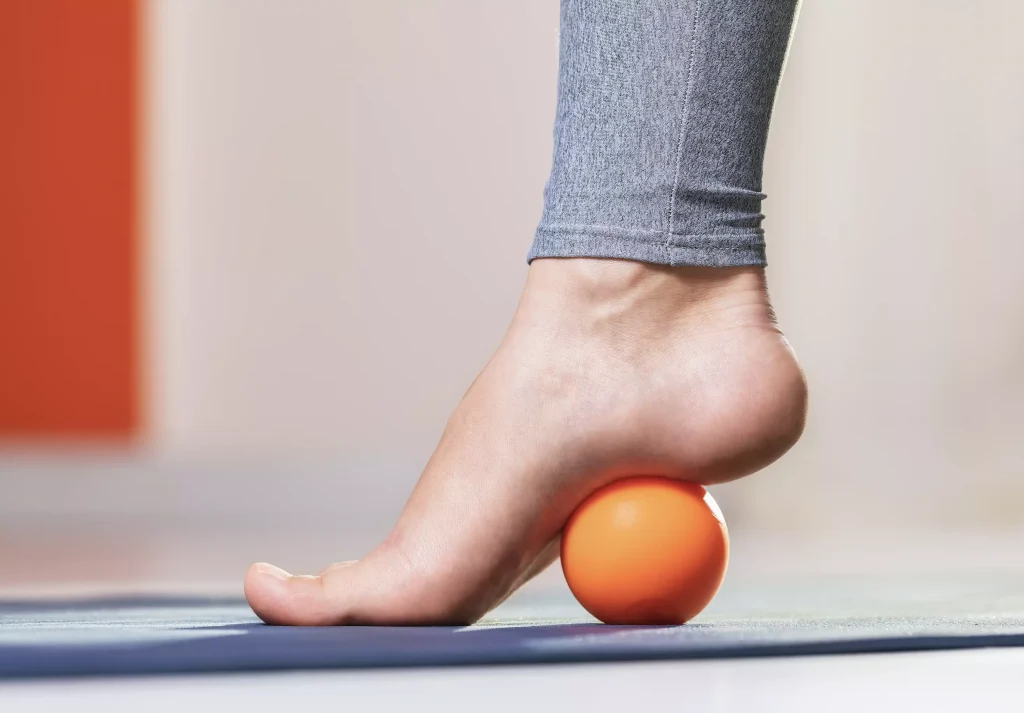
Plantar fasciitis Exercises
1. Arch Lifts
Remember, one of the reasons for plantar fasciitis is from muscles weakness.
We don’t tend to think of the muscle in our feet when it comes to overall strength, but if you don’t have muscle support your plantar fascia will get tight and irritated.
This exercise is hard at first because we don’t work on this muscle much, its almost going to feel like trying to wiggle your ears for the first time.
The great thing is even just trying this exercise will strengthen your foot and you’ll at his exercise over time.
- Sit with your bare foot fat on the floor, relax your toes.
- Keeping toes relaxed as much as you can, pull the ball of your foot towards your heel. You can also think of this as trying to lift your arch. Here’s the thing, this exercise is not very satisfying because your foot won’t move much and that’s expected!
- Repeat for three sets of ten.
Tip:
Depending on how high your arches are you may not see much lifting in your heel.
If you don’t think anything is happening, reach down and place a finger on the arch of your foot and feel for the muscle to contract.
Feeling the muscle get tighter means the exercise is working!
2. Marble Pick-ups
This exercise helpful because it also helps strengthen the muscles in your foot and while it’s not easy, it’s easier to learn than arch lifts.
- Get 10-20 marbles and place them on the floor with a cup next to your pile.
- Stand up and hold onto a steady surface like a counter to help with balance.
- Then in standing, grab with your toes to pick up one marble at a time and lift it into the cup. Picking up marbles can be challenging, but the great thing is even just trying to pick up the marble will strengthen your foot! Try picking up a cup of marbles once a day.
Signs Plantar Fasciitis is Healing
It’s a good sign plantar fasciitis is healing when you notice pain levels decrease with walking and recreational activities.
You’ll also start to feel more confident with your exercises.
If pain is not improving, reach out to your Primary Care Physician about other ways to treat plantar fasciitis and to see if you would benefit from seeing a Physical Therapist.
Final Thoughts
Plantar fasciitis can be frustrating, but there are ways to stretch and strengthen to help with pain.
If your pain is triggered by a certain activity thing about taking a short break while you work on your foot.
Try out the exercises and let us know which one is your favorite in the comments below!
FAQ’s:
Is Walking Good for Plantar Fasciitis ?
In general being active is helpful, but listen to your body. If your plantar fasciitis symptoms are high and your foot hurts with walking, take a break and try out the stretches and strengthening exercises discussed in this article. It’s not worth going for a walk if your pain levels are high and you are limping.
What Happens if Plantar Fasciitis Goes Untreated?
Overall, if untreated pain levels are likely to stay the same and may increase.
How do I know if I have Plantar Fasciitis or Heel Spurs?
Try out these exercises and see if symptoms change. If symptoms don’t change speak to your Primary Care Physician and they may want to do imaging to check for bone spurs.
How Long does Plantar Fasciitis Last?
Recovery time with plantar fasciitis varies wildly depending on the severity of your symptoms and what’s causing your symptoms (tightness, weakness, overuse etc.).
In general, the best way to reduce time with plantar fasciitis is to take a break from activities that significantly increase pain levels and to try out the exercises in this article. And again, if symptoms don’t change reach out to your Primary Care Physician to learn about more treatment options.


